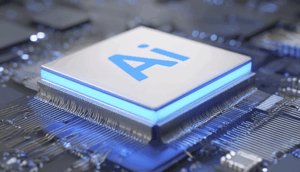In the realm of industrial automation, reliable and high-performance communication networks are paramount. CC-Link IE (Industrial Ethernet) has emerged as a dominant force, providing a robust and efficient solution for connecting various industrial devices and systems. This technology facilitates real-time data exchange, enabling seamless integration and improved productivity in manufacturing environments. CC-Link IE stands out due to its deterministic communication capabilities, which are crucial for time-sensitive applications such as motion control and robotics.

One of the key advantages of CC-Link IE is its high bandwidth, allowing for the transmission of large amounts of data quickly and reliably. This is particularly important in modern factories where vast quantities of data are generated by sensors, actuators, and other intelligent devices. The network’s architecture supports both star and ring topologies, providing flexibility in network design and implementation. Moreover, CC-Link IE incorporates advanced security features to protect against unauthorized access and cyber threats, ensuring the integrity and confidentiality of industrial data.
CC-Link IE Field and CC-Link IE TSN are the two prominent variants of the technology. CC-Link IE Field offers a robust and reliable Ethernet-based network designed for connecting field devices such as sensors, actuators, and I/O modules. It provides deterministic communication, ensuring that data is transmitted and received within a specified time frame. CC-Link IE TSN (Time-Sensitive Networking), on the other hand, builds upon the foundation of standard Ethernet by incorporating time synchronization and deterministic communication capabilities. This allows for the convergence of IT and OT (Operational Technology) networks, enabling seamless data exchange between different systems and devices. CC-Link IE TSN is particularly well-suited for applications requiring precise timing and synchronization, such as motion control and robotics.
Selecting the appropriate industrial data communication cable is crucial for ensuring the performance and reliability of CC-Link IE networks. Factors to consider include cable type (e.g., Cat5e, Cat6, Cat6a), shielding, temperature rating, and environmental conditions. Shielded cables are recommended for environments with high levels of electromagnetic interference (EMI) to minimize signal degradation and ensure data integrity. The cable’s temperature rating should also be appropriate for the operating environment to prevent damage and ensure long-term reliability. Additionally, the cable should be resistant to chemicals, oils, and other substances that may be present in the industrial environment.
Implementing a CC-Link IE network requires careful planning and execution. It’s essential to properly configure network devices, select appropriate cables and connectors, and perform thorough testing to ensure optimal performance. Regular maintenance and monitoring are also crucial for identifying and resolving potential issues before they impact the network’s operation. By following best practices and adhering to industry standards, organizations can leverage the power of CC-Link IE to improve efficiency, reduce downtime, and enhance overall productivity in their industrial operations. The ongoing development and refinement of CC-Link IE continue to solidify its position as a leading choice for industrial Ethernet connectivity, driving innovation and enabling the future of smart manufacturing.